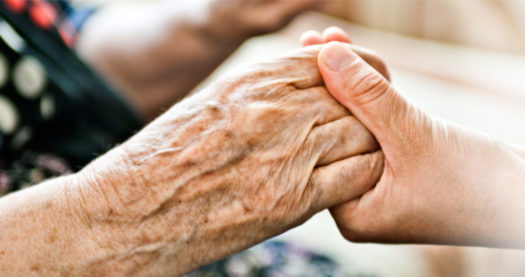This morning, I attended a presentation by a representative from Baylor, Scott, & White Medical Center sharing information about stroke and stroke symptoms. I knew most of the people attending the meeting and was keenly aware that at least half of them had been personally affected by stroke through a loved one, including myself. It dawned on me that tomorrow marks the 1.5 year mark since my mother suffered her stroke. Hence, today’s blog about stroke symptoms.
The American Stroke Association states that about 795,000 Americans  suffer a new or recurrent stroke each year and it is the 5th leading cause of death in the United States. 37% of all Americans cannot accurately identify even one warning sign of stroke. What exactly is a stroke? It is a brain injury caused when a blood vessel to the brain becomes blocked or bursts, cutting off blood flow and oxygen to the brain. 87% of stroke victims have what is called an Ischemic stroke, which occurs from a blockage in the blood vessels to the brain. The other 13% suffer a hemorrhagic stroke, which is caused by a burst or leaking of blood from the vessels in the brain.
suffer a new or recurrent stroke each year and it is the 5th leading cause of death in the United States. 37% of all Americans cannot accurately identify even one warning sign of stroke. What exactly is a stroke? It is a brain injury caused when a blood vessel to the brain becomes blocked or bursts, cutting off blood flow and oxygen to the brain. 87% of stroke victims have what is called an Ischemic stroke, which occurs from a blockage in the blood vessels to the brain. The other 13% suffer a hemorrhagic stroke, which is caused by a burst or leaking of blood from the vessels in the brain.
Many stroke victims have a series of “mini strokes” called Transient Ischemic Attacks (TIA’s) before a major stroke. These TIA’s occur when the blood flow to the brain is reduced or partially blocked. They are often written off as something else, instead of the warning signs your body is giving you. You should always consider these warning signs a medical emergency and seek help. Are you or a loved one noticing one side of the face drooping or feeling numb? Ask them to smile. Is there a noticeable upturn in the mouth only on one side? This is a symptom. Arm weakness is another signal. Hold out both arms in front for 10 seconds. Does one arm tend to struggle to stay up? Slurred speech, or even difficulty in speaking at all, is a third symptom. Try to repeat a simple sentence, like “Roses are red.” If it cannot be successfully repeated, get to the hospital or call 911.
Other symptoms that could indicate a TIA or stroke occurring are:
- sudden numbness or weakness in a leg
- sudden confusion or trouble understanding
- sudden trouble seeing in one or both eyes
- sudden trouble walking, dizziness, loss of balance or coordination
- sudden severe headache with no known cause
If you are or a loved one thinks a stroke is happening, call 911 and check  the time that the first symptoms appeared. This is important in proper treatment at the hospital. The sooner a stroke victim gets medical treatment, the better the chances they will survive or get better. Of course, you want to prevent a stroke from ever happening, so being more health conscious is a must. Don’t smoke, exercise regularly, lose excess weight, lower cholesterol, eat less sodium, and control high blood pressure.
the time that the first symptoms appeared. This is important in proper treatment at the hospital. The sooner a stroke victim gets medical treatment, the better the chances they will survive or get better. Of course, you want to prevent a stroke from ever happening, so being more health conscious is a must. Don’t smoke, exercise regularly, lose excess weight, lower cholesterol, eat less sodium, and control high blood pressure.
In my mom’s case, she was overweight and did not exercise regularly. She

did have high blood pressure and was taking medications to control it. For several months prior to her stroke, she complained of dizziness and an inability to keep her balance. She did go to the doctor and was diagnosed with vertigo. She got better for a while, but eventually, the dizziness returned. If she had not self diagnosed it as vertigo again and convinced herself that there was nothing that could be done, she might have been able to get her doctor to check for clogged arteries via an MRI. Her stroke was major, but she survived. Today, she is still paralyzed on her right side and suffers from aphasia. She is able to do many things, but she can no longer live on her own.
I hope this information helps someone else prevent their life from being changed in a heartbeat. You can find out more information at strokeassociation.org and heartcheckmark.org .

